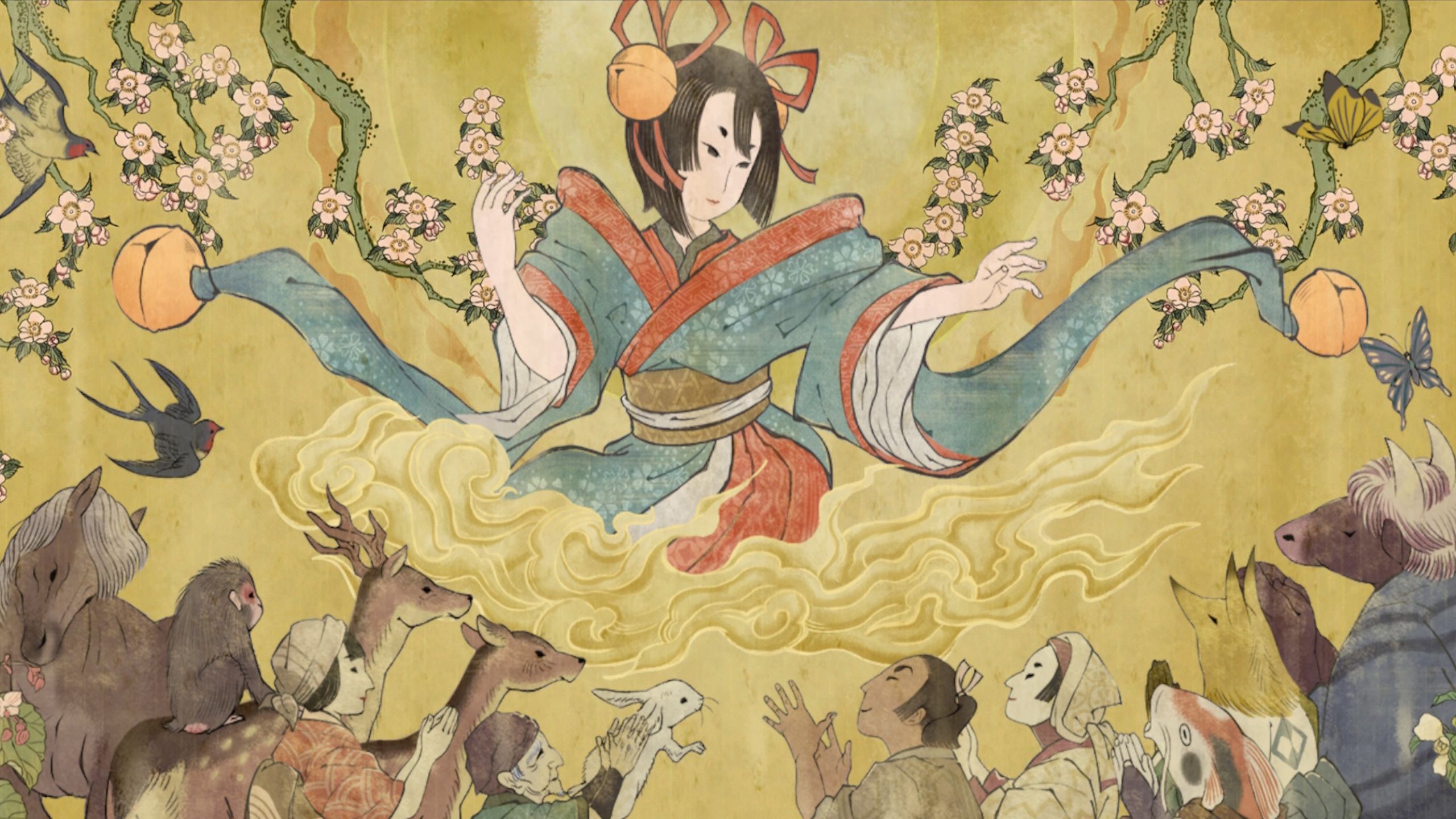This article is part of Run, Die, Repeat, Polygon’s week-long series exploring roguelikes.
I paid little attention to Towa and the Guardians of the Sacred Tree from Doraemon: Story of Seasons developer Brownies Inc. after its initial announcement. It seemed like Hades for weebs, and while that would normally be my kind of thing, Hades 2 is still very much present in my rotation thanks to frequent updates ahead of its full launch. I didn’t really need another “inspired by” game that was just a smidge different than its source material. So when I played Towa‘s recently released demo, I was surprised by just how much more daring and inventive this is compared to the usual Hades-likes, and it’s all thanks to one thing. Well, technically two: Towa‘s playable characters.
In defense of my initial assessment, Towa is very much a Hades clone, at least in its fundamentals. You journey through a series of rooms, fighting enemies and claiming treasures that include different currency types and Graces. Graces are rewards that augment your skills and weapon power, basically Towa‘s version of Boons from Hades. There’s a mysterious shopkeeper, a roving chef, and other characters you have a random chance of encountering, and, like the House of Hades, the village acts as a base where you can customize upgrades and build connections with other characters.
The gist of Towa‘s story is that a scion of a god sets out to protect the village under her care against an onslaught of evil spirits. Eight of those villagers become her trusted friends and allies, known as the Prayer Children, and the action starts on the cusp of the final battle. These initial fights are fine, but kind of dull. Thankfully, they don’t take long, and everything goes to hell after the initial boss fight ends, which is when things get interesting and much less like Hades.
The Prayer Children are banished to another dimension, and Towa goes back to find her village trapped in a time bubble. (Time travel is a big thing in Towa, though the demo ends right before you get to use it for the first time.) The next time you head out after this, only the Prayer Children can fight, with two of the eight teaming up for each run. Each of the Children can fill one of two roles: the Tsurubi, a frontline fighter wielding a sword in battle, and the Kageru, a kind of magical support unit. You can assign any of the Prayer Children to either role, and each will have a different swordfighting style as a Tsurubi or access to different spells as a Kageru, depending on their elemental alignment.
You pick a different weapon in Hades or take a different path in Dead Cells, but the thing driving you forward remains largely the same: Learn how to do better, and hope for some good luck. Repetition in Towa isn’t just a chance to get good. It’s an opportunity to experiment wildly, to make the most busted combo ever or try your luck with a Frankenstein’s monster of a team, and to uncover a lot more about the characters you’re using in the process.
For my first run, I made the snobby witch Origami (yes, like the folded paper art) the Tsurubi and buff bipedal koi monk Nishiki the team’s Kageru. A few minutes in the pre-expedition training ground, where you can see how your team works together, showed me that was a bad idea. Nishiki’s starting spells work better with a partner who moves around a lot, and Origami’s sword attacks are slow. I enjoy doing what a game clearly doesn’t want me to do, though, and pressed forward anyway.
This run ended in failure, unsurprisingly, but it didn’t feel like a setback. I learned what combat styles these two characters should not team up with, of course. But I also got to know more about Origami and Nishiki in a scene where she resolves to be less selfish and Nishiki gets it into his head that she’s going to convert to his religion now that she’s not a jerk anymore (she won’t, and she still is). Other runs with different characters tease deeper secrets they’re hiding and threaten confrontations among the party’s more aggressive members. The mix of brash, strong personalities is strong enough that I can easily see myself using awful pairings in battle just to see their conversations together in quieter moments.
The next run was an unmitigated blast. Nishiki was the Tsurubi this time, and I put the hyperactive shonen hero Shigin as the Kageru, who was frequently reminded by the placid monk to settle down please. Nishiki was like a different fighter in this role, swirling around the battlefield in a rush of blade strikes, slicing through crowds of enemies without taking a single hit. Shigin could summon three spheres of air that slowly rotate and damage foes when they make contact. It’s the same spell Nishiki had in the previous run that failed, but with the fish monk flying around the battlefield at speed this time, it went from being completely useless to one of the best parts of the team’s kit.
The dual-character focus changes how you think about upgrades as well. Health restoration pools make you choose between healing one character fully or both just a little, for example. Some Graces do standard things like increase sword or spell attacks, but the more interesting ones have conditions, such as buffing the Kageru’s power if the Tsurubi takes damage, or adding useful elemental bonus effects.
In one memorable scenario, I gave Shigin a fire bolt spell (which deals minor fire damage continually), with Graces that increased spell power and added slow and shock effects to the Tsurubi’s main attacks. Nishiki just had to use a few basic strikes to slow a group of enemies, set them on fire, and call down deadly lightning in the span of maybe two seconds. This duo blitzed the area’s boss in under a minute.
That interplay between both characters and the build choices are just so satisfying that I didn’t even mind how easy it made that expedition. Tougher enemies would be nice, and I hope the full game has plenty of them, but wrecking wimps with ridiculously broken combos has a charm all its own.
This demo is just a small piece of the main game, of course, as the full thing doesn’t launch until Sep. 18. However, what I played seems representative of a creative philosophy I hope we start to see more of. It’s inevitable that publishers want games inspired by whatever’s popular at the time (just look at all those Soulslikes). But it’s hard to describe just how refreshing it is to see a studio work those clear inspirations and similarities into their game and then turn them into something wholly their own.
Towa and the Guardians of the Sacred Tree is out Sept. 19 for Nintendo Switch, PlayStation 5, Windows PC, and Xbox Series X.

















![21st Aug: Hostage (2025), Limited Series [TV-MA] (6/10)](https://occ-0-1774-448.1.nflxso.net/dnm/api/v6/Qs00mKCpRvrkl3HZAN5KwEL1kpE/AAAABcnzqNn9xwhlvIo36tMAdbuwfmXExhqm9QGnirO6rYJrsoalLEY5ncEz4pdeUkTOsKtbrOJLCwDXYYmfULVw3GynVF_3RCnohPcdgP4ZrdCu0gdRhB23TWJVU2Hcjc9J-areQImCDV2ptMoUAD6SUoZCdnyWEVFE96TmXa7rI1-1LcwehcYKKg7gF0e_TJ09aPOEwCBJUQ.jpg?r=cd1)